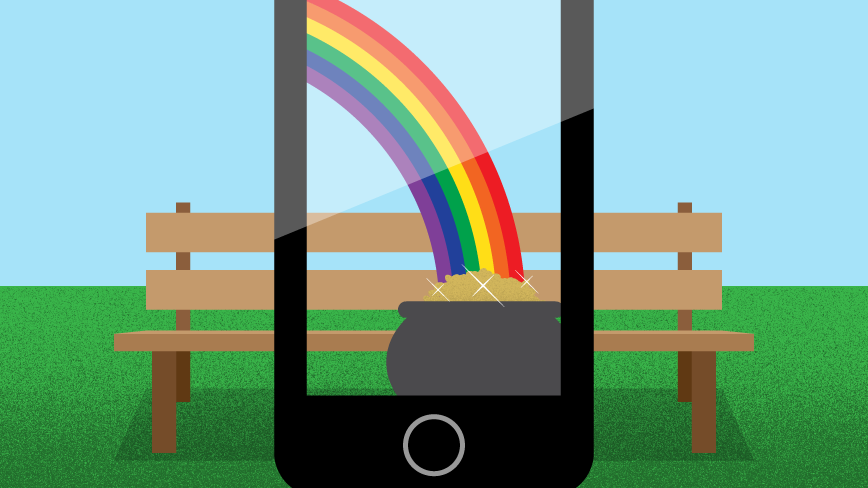Now that augmented reality has proven its worth, brands can double their efforts in offering immersive AR marketing experiences.
While many marketing technology experts predicted that augmented reality (AR) would make a bigger impact than virtual reality on the digital marketing world, the rest of us remained skeptical until the runaway release of Pokemon Go last month. The mobile game exploded onto the scene with more daily active users and daily engagement time than several major social media platforms.
AR apps and campaigns may just get the push they need to find legitimacy and widespread adoption amongst both marketing departments and consumers because of the recent proven success of AR game technology. Plenty of intriguing use cases exist, and with a first major milestone as momentum, we could soon see a new generation of creative, immersive and addictive AR efforts on the horizon.
Practical AR is Magical
Before the latest AR gaming craze, most AR concepts limited themselves to overlay-style functionality, such as Snapchat’s popular “filter” feature, which supplies a complex way for users to augment selfie pictures with quirky effects like vomiting rainbows or a flower crown.
Now brands have been coming up with clever ways to utilize AR technology for marketing purposes. Makeup brands have given people a way to play with new looks using virtual mirrors, resulting in a savings of the time it takes to try on products and less product waste.
Science has backed up the effects of AR. Academic researcher Ana Devornik conducted a lab experiment and discovered that participants held positive attitudes toward AR and were willing to spread the word about it. However, Devornik cautions that the experiment directed more attention to the technology than the underlying brands and products.
“People will only change their behavior if they perceive the value is worth the effort of adding another information layer into an already saturated digital space,” she says.
AR Marketing Becomes Seamless and Engaging
So far, a few brands have been able to solve the digital overload problem. For example, Nissan has allowed new car owners to replace the cumbersome process of reading their user manual with simply holding up their smartphone camera over particular vehicle features for information. By hovering their phone over a feature like the dashboard’s warning lights or radio, an owner can instantly see how these features work in an accessible context. This capability is not only intriguing, but it also allows new Nissan owners to ease through the transition process more quickly, helping to build affinity towards the product with less friction.
McDonald’s offered a similar overlay function in Australia in 2013 with their TrackMyMacca app. Customers who wanted to see how their meal components were sourced just had to point their camera at meal items to find out which local sources supplied the ingredients.
The Nissan and McDonald’s case examples show how AR can offer more than mere gimmicks. Helping out vehicle owners on the fly and easing fears about unsafe food sourcing helps to foster brand loyalty while providing value.
Now that it has been established that AR can have a huge impact on consumers, brands could take augmented elements and functions to even greater heights. Possibilities include incentivizing a brand customer to collect reward points by visiting different retail locations or by purchasing products in a certain combination. After all, just imagine the addictive potential of trying to capture coupons, discounts and free promotions instead of game creatures.

